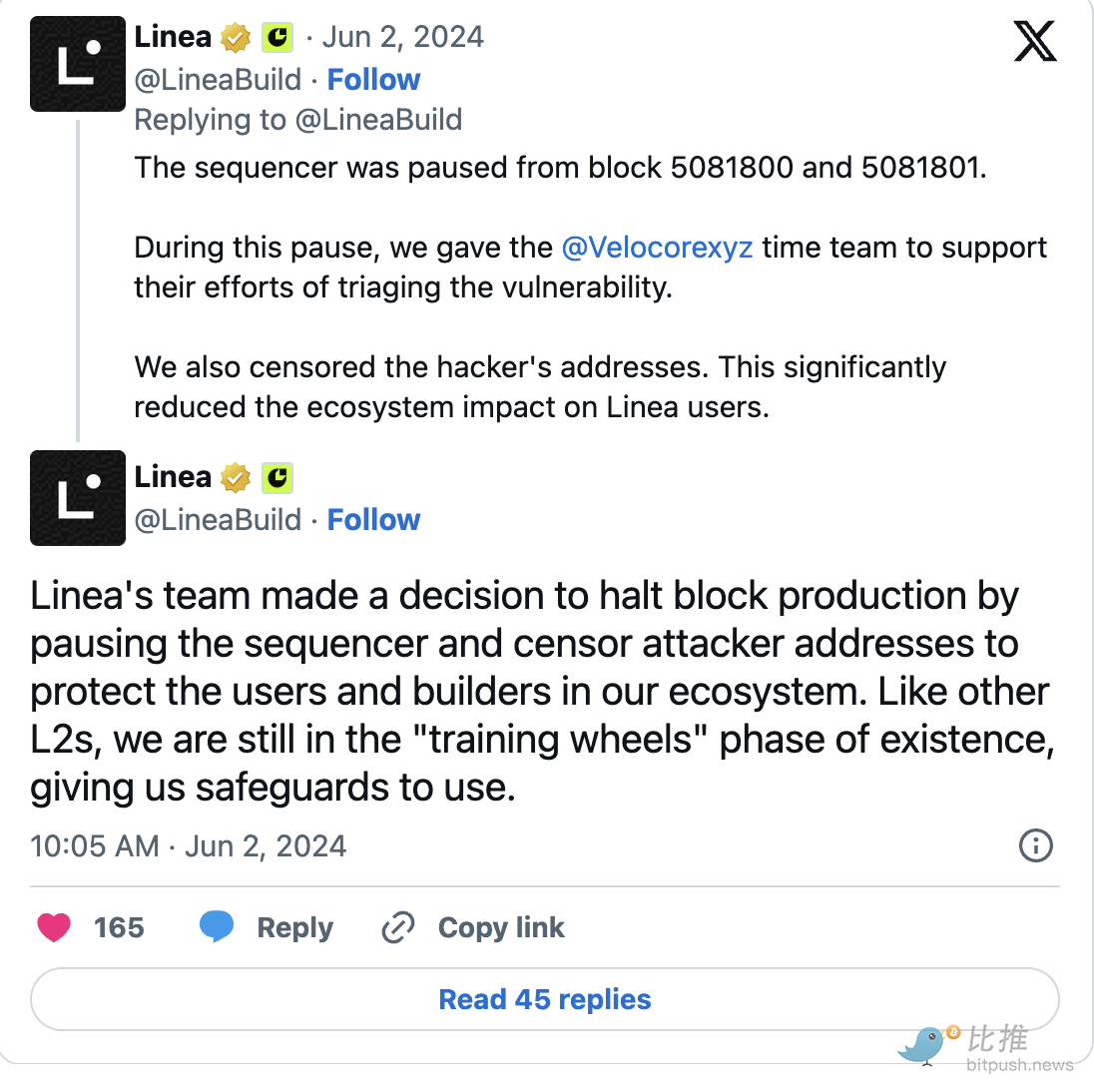Written by: Daranee Ganesh
Compiled by: BitpushNews Scott Liu
The sorter of Layer-2 solution is now too centralized, which brings huge hidden dangers to the entire blockchain industry. If timely measures are not taken, the decentralized principle of blockchain will be threatened and a crisis of trust will follow. In order to maintain the security of the network, Layer-2 projects must promote transformation as soon as possible to eliminate single points of failure.
If not responded to in a timely manner, network security will be seriously threatened and the entire ecosystem will face a series of problems including transaction review, security vulnerabilities, and even customer data and funds leakage.
Since the second quarter of 2024, Ethereum-based Layer-2 solutions have processed 12 times the transaction volume of the Ethereum mainnet. In addition, the total locked value (TVL) of the Layer-2 ecosystem hit an all-time high of $49 billion on June 6. These data show that the popularity of Layer-2 networks is accelerating. However, with the increase in popularity, new problems have also arisen - the increasing centralization of sorter operations.
The sorter is a crucial part of the Layer-2 network, responsible for sorting and packaging transactions before submitting them to the Ethereum mainnet. However, this efficient operation comes at the cost of loss of decentralization, and the sorter is gradually becoming a "double-edged sword".
In Ethereum's Layer-2 solution, the sorter is responsible for managing the transaction data flow. When multiple transactions occur at the same time, the sorter decides which transaction to process first. This process is often controlled by a single entity. Although it can improve transaction processing efficiency, it also brings huge risks to censorship and manipulation.
These concerns are not unfounded. Most mainstream Layer-2 solutions today rely on centralized sorters, which are usually managed by the companies that build these rollups. For example, data shows that Coinbase's Base network generated $30 million in revenue for the company in March 2024 alone through sorter fees, and annualized revenue can reach approximately $360 million.
In an increasingly decentralized industry, trust should be minimized, and the fact that a single company controls key blockchain operations naturally raises widespread doubts.
Christine Kim, vice president of research at Galaxy Digital, said that decentralization should not be simply understood as a binary concept, but rather a spectrum, and the impact of centralization should be minimized as much as possible. She emphasized: "Promoting the implementation of decentralized sequencers may be one of the most challenging tasks in rollup projects, but it is also the key to increasing decentralization and enhancing resilience."
Recently, users of Linea, a zkEVM rollup backed by Consensys, suffered a loss of $2.6 million. Even more shocking, the project development team unanimously decided to suspend sorter operations and "block the attacker's address to protect the interests of users and developers."

This incident highlights the potential harm of sequencer centralization and warns us of the importance of decentralization. By decentralizing the sequencer, the network can effectively eliminate single points of failure and enhance its risk resistance to attacks and technical failures. This not only improves the security of the network, but also better fits the core values of blockchain technology, especially in terms of transparency and efficiency.
Fortunately, most Layer-2 solutions have begun to realize the necessity of decentralization. By introducing a network of validators and block producers, Layer-2 solutions can achieve random selection and rotation of sorter nodes. These nodes share the responsibility of transaction sorting and packaging, greatly improving the security and stress resistance of the network.
This decentralized sorting mechanism not only ensures the fairness and security of the sorting process, but also significantly reduces the risk of censorship and manipulation without sacrificing performance. This move encourages more community participation and establishes alignment of interests between the network and users, thereby better implementing the core principles of blockchain.
Recently, Vitalik Buterin proposed a classification system for rollup networks, dividing them from stage 0 to stage 2. He believes that most of the leading rollup projects currently still rely on some form of "training wheels."
Looking ahead, Layer-2 solutions must quickly move away from these temporary measures or risk stagnation or even elimination. While centralization undoubtedly brings considerable economic benefits and operational convenience in the short term, it serves the interests of operators more. In contrast, decentralization, although full of challenges, can bring long-term stability and development to projects and their communities.
This “self-reinforcing model” not only reduces security costs, but also starts a virtuous cycle. Increased community participation leads to more staking, which further enhances the security of the network and attracts more decentralized applications and innovators.
In addition, the steady growth of capital inflows to decentralized exchanges (DEX) after the decentralization of the sorter also shows that as long as the incentive mechanism is in place, users are fully willing to accept a slight increase in latency. In addition to improving security through mechanisms such as liquid staking, decentralized sorters also closely align the interests of industry participants and contributors with the growth of the ecosystem.
For example, the revenue sharing model of sorter mining effectively increases user participation and establishes a direct link between community participation, network security, and ecosystem growth. As the technical prototype matures, even the Bitcoin Layer-2 network has begun to provide mining rewards through decentralized sorters.
In the future, the Ethereum Layer-2 ecosystem cannot rely on just one network to achieve sorter decentralization. Decentralization across multiple networks is key to ensuring the integrity of blockchain technology. Established Layer-2 solutions must act quickly to avoid being eliminated by the market and ensure the safety of their users.







